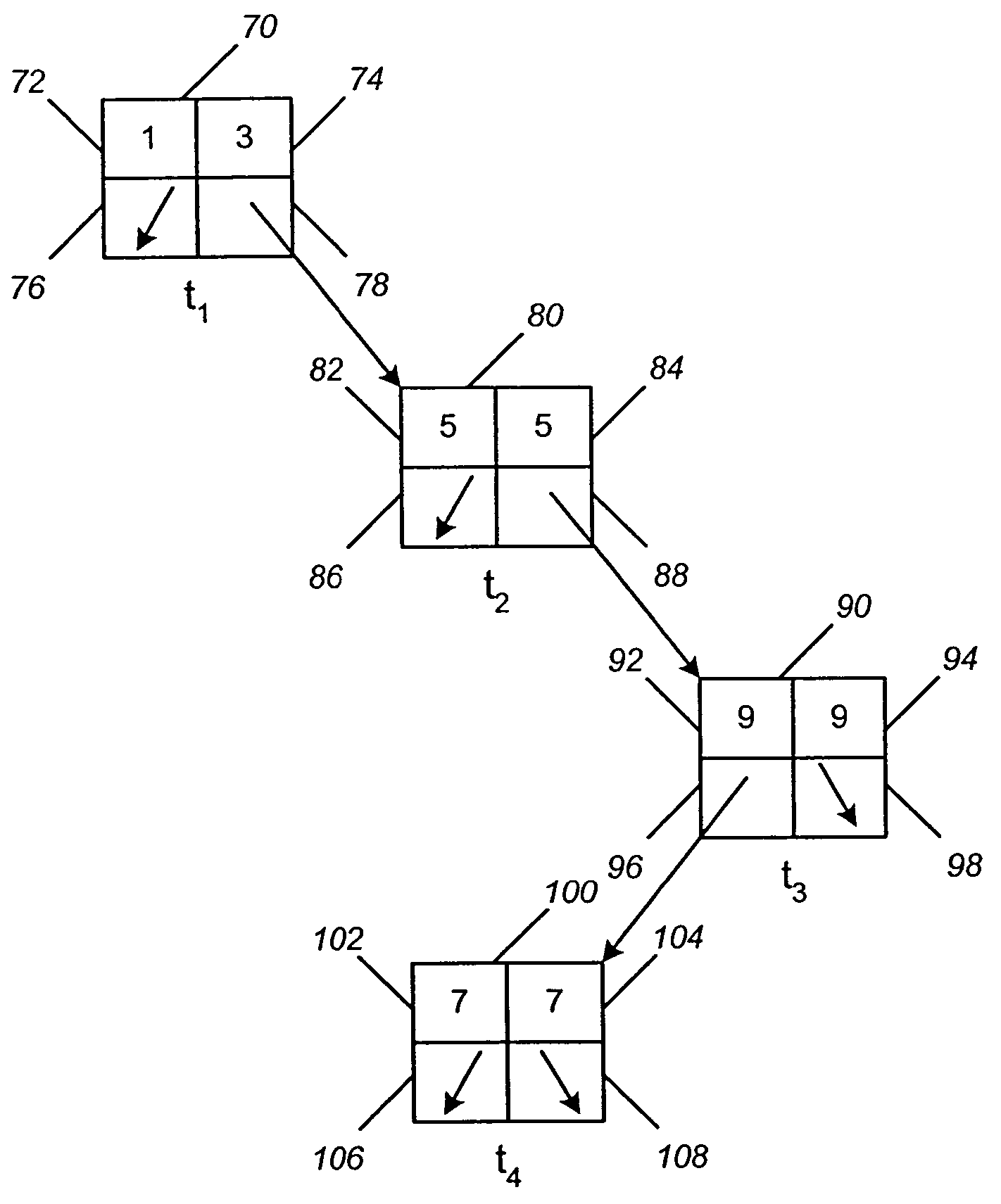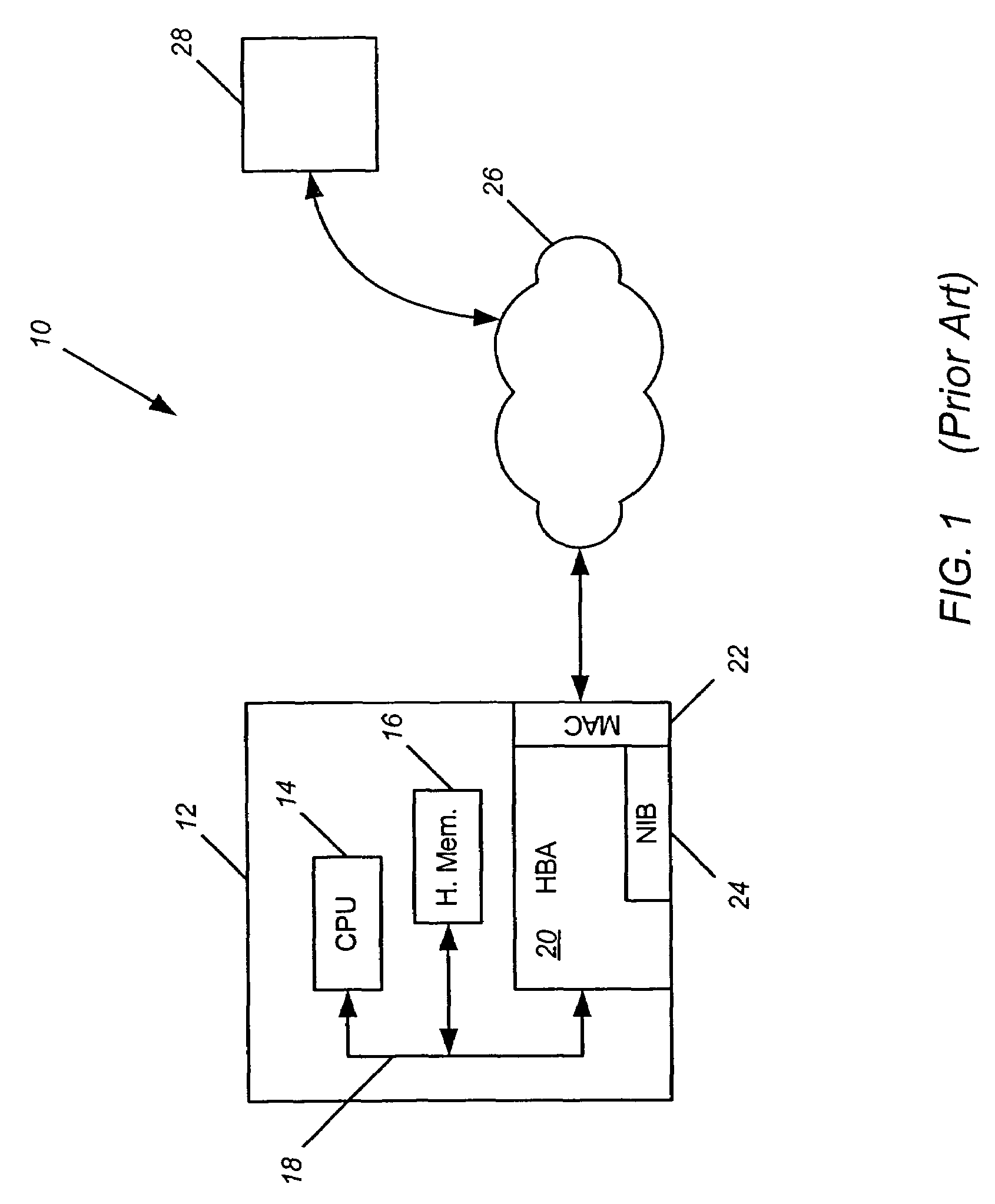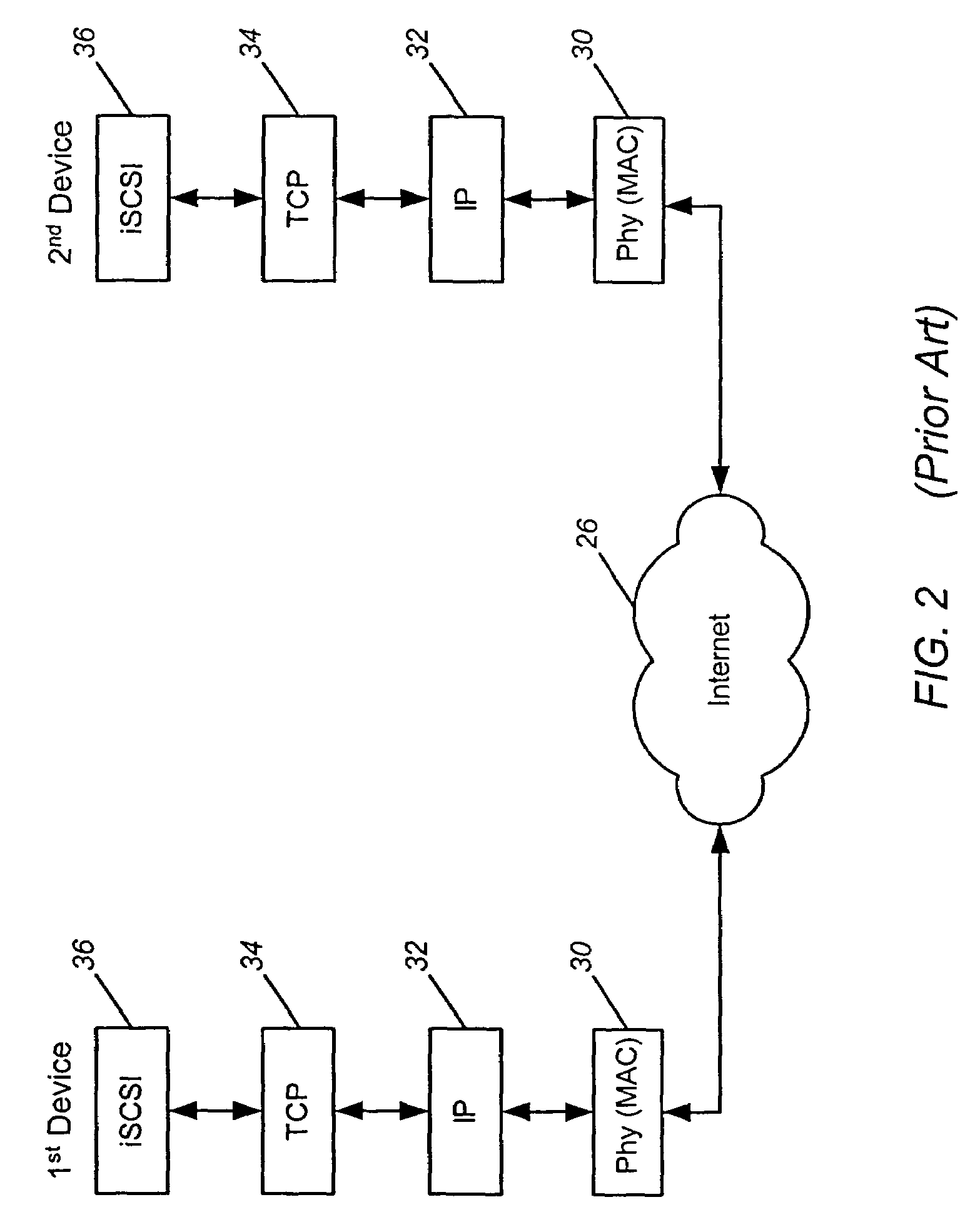Sparse and non-sparse data management method and system
a data management and non-sparse technology, applied in the field of data management methods and systems, can solve the problems of non-sparse and non-sparse data that cannot be efficiently supported, and achieve the effect of minimizing storage requirements and efficient methods
- Summary
- Abstract
- Description
- Claims
- Application Information
AI Technical Summary
Benefits of technology
Problems solved by technology
Method used
Image
Examples
Embodiment Construction
[0031]The invention is described in detail below with reference to the figures, wherein like elements are referenced with like numerals throughout. As discussed below, the invention is described in the context of receiving data packets formatted in accordance with TCP / IP and iSCSI protocols, wherein each packet contains header information that includes an iSCSI sequence number for enabling firmware and / or software executed by the receiving device (e.g., a HBA) to keep track of received data packets. However, it is understood that the invention is not limited to these exemplary data communication protocols and may be utilized to manage data in the context of various other communication and data processing protocols known in the art.
[0032]FIG. 4A illustrates a simple binary tree having nodes or “leafs” that represent iSCSI sequence number ranges of 1–3, 5, 7 and 9. As shown in FIG. 4A, which is only an exemplary scenario, three packets having iSCSI sequence numbers 1, 2 and 3, respect...
PUM
 Login to View More
Login to View More Abstract
Description
Claims
Application Information
 Login to View More
Login to View More - R&D
- Intellectual Property
- Life Sciences
- Materials
- Tech Scout
- Unparalleled Data Quality
- Higher Quality Content
- 60% Fewer Hallucinations
Browse by: Latest US Patents, China's latest patents, Technical Efficacy Thesaurus, Application Domain, Technology Topic, Popular Technical Reports.
© 2025 PatSnap. All rights reserved.Legal|Privacy policy|Modern Slavery Act Transparency Statement|Sitemap|About US| Contact US: help@patsnap.com



